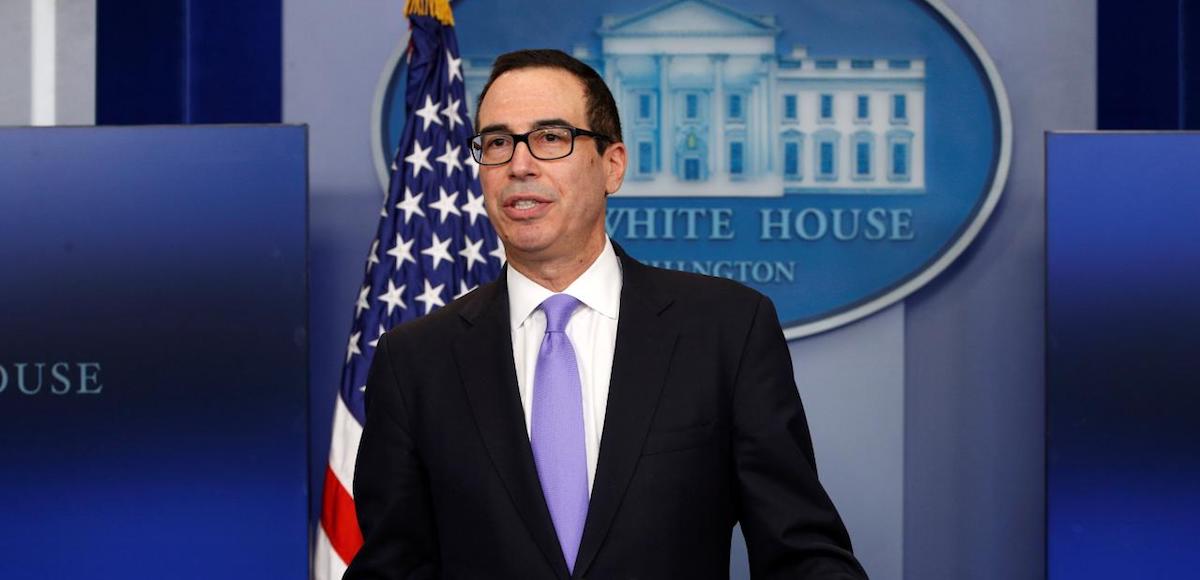

Treasury Secretary Steven Mnuchin speaks at a press briefing at the White House in Washington, U.S., February 14, 2017. (Photo: Reuters)
Total public debt outstanding has declined more than $100 billion under the Trump Administration. According to the latest figures from the U.S. Treasury Department, those savings were preserved for the week ending August 11.
On January 20, 2017, the day President Donald Trump was inaugurated, total public debt for the U.S. stood at $19,947,304,555,212, or nearly $20 trillion. It continued to increase and fluctuate incrementally, reaching a high of $19,959,593,604,841 on February 28, 2017.
But then it started to fall and has generally continued on a downward trend ever since. There has been no significant increase in the total public debt outstanding in the U.S. since it increased to $19,902,604,401,637 on March 14, 2017.
As of August 11, 2017, total public debt for the U.S. stood at $19,845,021,514,944.16, a decline of more than $100 billion. Debt held by the public fell from $14,403,704,176,388.94 to $14,398,550,007,057.28. Intragovernmental holdings fell from $5,543,600,378,823.55 to $5,446,471,507,886.88.
Still, barring significant reforms in the federal budget, short-term savings are likely to be erased by inevitable increases in the cost of poorly designed entitlements and demographic trends.
The U.S. Treasury Department publishes data on the total public debt outstanding in the U.S. at the end of every business day. Since our first report, as requested by our readers, People’s Pundit Daily (PPD) has begun to track that data weekly, beginning with the day President Trump was sworn in on Inauguration Day.
View this period here.
The most damning journalistic sin committed by the media during the era of Russia collusion…
The first ecological study finds mask mandates were not effective at slowing the spread of…
On "What Are the Odds?" Monday, Robert Barnes and Rich Baris note how big tech…
On "What Are the Odds?" Monday, Robert Barnes and Rich Baris discuss why America First…
Personal income fell $1,516.6 billion (7.1%) in February, roughly the consensus forecast, while consumer spending…
Research finds those previously infected by or vaccinated against SARS-CoV-2 are not at risk of…
This website uses cookies.